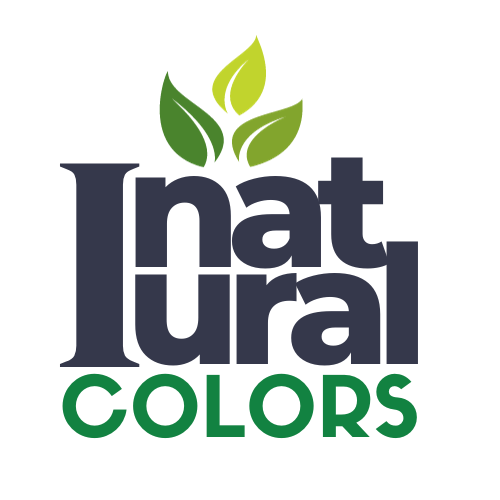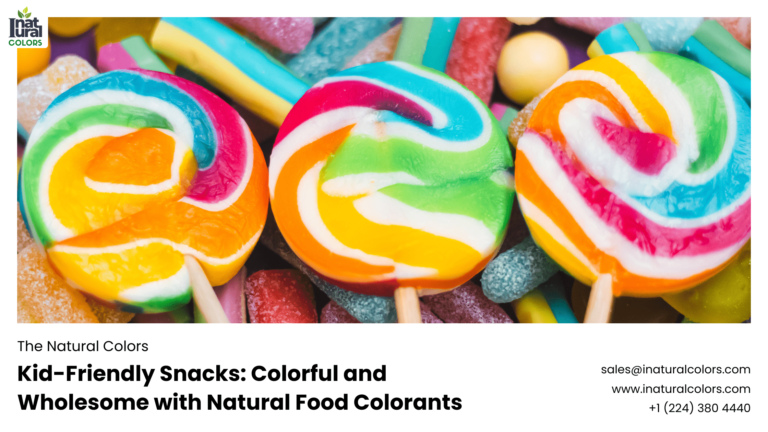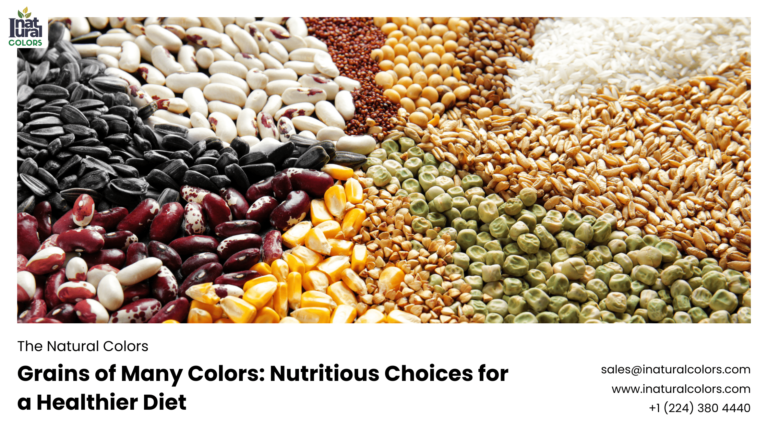Beautiful Plants For Your Interior

Introduction
Choosing the right natural colors for your food is an essential aspect of modern cooking. Not only do natural colors make dishes more visually appealing, but they also come with a range of health benefits and environmental advantages. In this article, we’ll dive into the world of natural food colors, explore their sources, and provide practical tips on how to use them in your kitchen.
Understanding Natural Food Colors
Definition of Natural Food Colors
Natural food colors are pigments derived from natural sources such as plants, animals, and minerals. Unlike artificial food colors, which are synthesized from chemicals, natural food colors are extracted from fruits, vegetables, herbs, spices, and other natural ingredients.
Differences Between Natural and Artificial Food Colors
The primary difference between natural and artificial food colors lies in their origin. While natural colors are obtained from organic sources, artificial colors are created through chemical processes. Natural colors are often perceived as safer and healthier, as they do not contain synthetic additives.
Benefits of Using Natural Food Colors
Health Benefits
Natural food colors come with numerous health benefits. Many are rich in antioxidants, vitamins, and minerals. For instance, the red pigment in beets is high in betalains, which have anti-inflammatory properties.
Environmental Impact
Using natural food colors can reduce the environmental footprint of food production. Natural colors are biodegradable and typically require fewer resources to produce compared to synthetic dyes.
Consumer Preference
There is a growing consumer preference for natural and organic products. Shoppers are increasingly looking for food items that do not contain artificial additives, making natural food colors a popular choice.
Common Sources of Natural Food Colors
Fruits and Vegetables
Fruits and vegetables are among the most common sources of natural food colors. Beets, carrots, spinach, and blueberries are just a few examples of produce that can be used to add vibrant colors to your dishes.
Herbs and Spices
Herbs and spices like turmeric, saffron, and paprika can provide rich hues ranging from yellow to red. These ingredients not only add color but also enhance the flavor of your food.
Other Natural Sources
Other sources of natural food colors include certain types of algae, such as spirulina, and edible flowers like hibiscus.
Types of Natural Food Colors
Red Food Colors
Beetroot
Beetroot is a fantastic source of red color. It can be used in its raw form, as juice, or as a powder. The deep red pigment from beetroot is ideal for coloring desserts, beverages, and sauces.
Pomegranate
Pomegranate juice can add a beautiful red hue to drinks and desserts. It’s also packed with antioxidants, making it a healthy addition to your recipes.
Yellow and Orange Food Colors
Turmeric
Turmeric is renowned for its bright yellow color. It’s commonly used in curries and can also be added to rice, soups, and even smoothies for a golden touch.
Carrots
Carrots provide a natural orange color. Carrot juice or puree can be used in cakes, sauces, and soups to add a vibrant orange hue.
Green Food Colors
Spinach
Spinach is a versatile green colorant. Blended spinach can be added to pasta dough, smoothies, and baked goods to achieve a natural green color.
Matcha
Matcha, a type of powdered green tea, offers a bright green color. It’s perfect for adding color and a unique flavor to desserts, beverages, and even savory dishes.
Blue and Purple Food Colors
Blueberries
Blueberries can provide a range of colors from blue to purple. They are excellent for coloring jams, syrups, and baked goods.
Purple Sweet Potatoes
Purple sweet potatoes are another fantastic source of purple color. They can be used in a variety of dishes, from mashed potatoes to ice cream.
How to Extract Natural Colors
Simple Extraction Methods
Extracting natural colors can be as simple as blending and straining fruits or vegetables. For example, beet juice can be obtained by blending beets and straining the pulp.
Tips for Maintaining Color Intensity
To maintain the intensity of natural colors, avoid exposing them to high heat for extended periods. Acidic environments, such as those created with lemon juice or vinegar, can help preserve the vibrancy of certain colors.
Incorporating Natural Colors into Your Diet
Everyday Recipes
Incorporating natural colors into your daily meals can be easy and fun. Try adding spinach to your morning smoothie, turmeric to your scrambled eggs, or beet juice to your pancake batter.
Special Occasion Dishes
For special occasions, use natural colors to create visually stunning dishes. Think rainbow cakes made with different fruit and vegetable purees or colorful salads featuring a variety of naturally colored ingredients.
Natural Food Colors in Commercial Products
Trends in the Food Industry
The food industry is increasingly adopting natural colors. Many brands now advertise their use of natural ingredients to attract health-conscious consumers.
Challenges and Solutions
One of the main challenges with natural colors is their variability. Unlike artificial colors, natural colors can differ in shade depending on the source and extraction method. However, advancements in food technology are helping to standardize these colors.
Safety and Regulations
Regulatory Standards for Natural Colors
Natural food colors are regulated to ensure safety. In the United States, the Food and Drug Administration (FDA) oversees the use of color additives in food. Similar agencies exist in other countries.
How to Ensure Safety in Homemade Extractions
When extracting colors at home, use fresh, organic produce to avoid contaminants. Store extracts in clean, airtight containers and use them within a few days to ensure freshness.
Choosing the Right Natural Color for Your Needs
Factors to Consider
When choosing a natural color, consider the desired shade, flavor, and nutritional benefits. Some natural colors can alter the taste of your food, so it’s important to choose one that complements your recipe.
Pairing Colors with Flavors
Pairing colors with flavors can enhance your culinary creations. For instance, use turmeric for its earthy flavor and bright yellow color in savory dishes, or blueberries for their sweet-tart flavor and blue hue in desserts.
Sustainability of Natural Food Colors
Sustainable Sourcing
To ensure sustainability, choose natural colors from sources that practice environmentally friendly farming. This includes using organic methods and avoiding overharvesting.
Impact on Biodiversity
Sustainably sourced natural colors can have a positive impact on biodiversity. By supporting diverse agricultural practices, you contribute to the health of ecosystems.
DIY Projects with Natural Food Colors
Homemade Food Coloring Kits
Create your own food coloring kits using natural ingredients. Combine powdered spinach, beetroot, turmeric, and other colorful foods to make a versatile set of colorants.
Creative Uses Beyond Food
Natural colors can also be used in non-food projects such as homemade soaps, candles, and playdough for kids.
Case Studies and Success Stories
Brands That Successfully Use Natural Colors
Brands like Annie’s Homegrown and Trader Joe’s have successfully integrated natural colors into their products, gaining consumer trust and loyalty.
Personal Anecdotes
Many home cooks and chefs have shared their success stories of using natural colors. From vibrant holiday cookies to stunning birthday cakes, the possibilities are endless.
Future Trends in Natural Food Colors
Innovations and Research
Research is ongoing to discover new natural color sources and improve extraction methods. Innovations in this field promise even more vibrant and stable natural colors.
Predictions for the Future
As consumer demand for clean labels continues to rise, natural food colors will likely become even more prevalent. Expect to see a wider variety of natural colors available on the market.
Conclusion
Natural food colors offer a beautiful and healthy way to enhance your dishes. By understanding their sources and benefits, you can make informed choices that contribute to your well-being and the environment. Whether you’re a home cook or a food industry professional, natural colors can add a delightful touch to your culinary creations.
FAQs
Are natural food colors safe for everyone?
Yes, natural food colors are generally safe for most people. However, always check for potential allergens, especially if you have specific food sensitivities.
How long do natural food colors last?
Natural food colors can last for a few days to a few weeks, depending on how they are stored. Keep them in airtight containers in the refrigerator for best results.
Can natural food colors affect taste?
Yes, some natural food colors can impart a slight flavor to your dishes. For instance, turmeric has an earthy taste, while beetroot can add a hint of sweetness.
What is the best way to store natural food colors?
Store natural food colors in clean, airtight containers in the refrigerator. This helps preserve their color and freshness.
Are there any allergens in natural food colors?
Some natural food colors can be allergens for certain individuals. For example, people with a carrot allergy should avoid using carrot-derived colorants.



